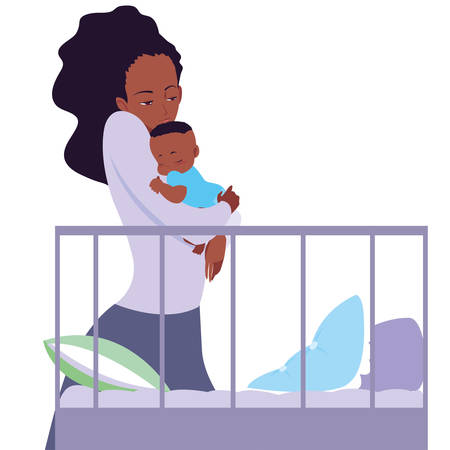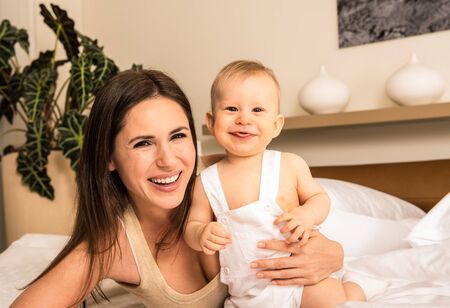1. Why Babyproofing Matters
As babies grow and become more curious, they start exploring every corner of your home. While their curiosity is an essential part of learning, it also exposes them to various hazards—especially doors and cabinets. Without proper babyproofing, these everyday household items can pose significant risks.
Understanding the Risks
Cabinets and doors may seem harmless to adults, but for little ones, they can lead to serious accidents. Here are some common dangers:
| Household Item | Potential Risk |
|---|---|
| Cabinets | Chemical exposure, sharp objects, choking hazards from small items |
| Doors | Pinch injuries, access to unsafe areas like staircases or bathrooms |
| Drawers | Tipping over when climbed on, pinched fingers |
The Role of Babyproofing
Babyproofing your home with door and cabinet locks is a simple yet crucial step in preventing accidents. By securing cabinets, you can keep harmful substances out of reach. Installing door locks ensures that babies cannot access dangerous areas like kitchens, bathrooms, or staircases.
How Babyproofing Helps Create a Safer Home
- Prevents injuries: Reduces the risk of pinched fingers, head bumps, or falls.
- Keeps hazardous materials away: Prevents children from accessing cleaning supplies, medications, or sharp objects.
- Gives parents peace of mind: Allows you to focus on daily tasks without constant worry.
- Encourages safe exploration: Creates a controlled environment where babies can safely develop their motor skills.
A Simple Step for a Big Difference
A few well-placed locks and latches can make all the difference in keeping your child safe. Taking the time to babyproof your home now can prevent accidents and create a secure space for your little one to explore freely.
2. Common Hazards Lurking Behind Cabinets and Doors
Your home may seem like a safe place, but to a curious baby, it can be full of hidden dangers. Unlocked cabinets and doors give little explorers access to items that could be harmful. From cleaning supplies to sharp utensils, these common household items pose serious risks if not properly secured.
Everyday Household Dangers
Babies love to explore by touching, grabbing, and even tasting everything in sight. Here are some of the most common hazards that could be hiding behind an unlocked cabinet or door:
| Hazard | Potential Danger |
|---|---|
| Cleaning Supplies | Toxic chemicals that can cause poisoning if ingested. |
| Sharp Objects | Knives, scissors, and other sharp tools that can lead to cuts or injuries. |
| Heavy Items | Pots, pans, and small appliances that could fall and cause harm. |
| Medicines | Pills and liquid medications that can be extremely dangerous if swallowed. |
| Small Objects | Batteries, coins, and buttons that pose choking hazards. |
The Importance of Securing Cabinets and Doors
A simple latch or lock can prevent your child from accessing these dangerous items. Installing childproof locks on cabinets and securing doors to restricted areas is one of the easiest ways to keep your baby safe. Even if you think certain cabinets are out of reach, remember that babies are always learning new ways to climb and explore.
Tips for Babyproofing Cabinets and Doors
- Use Safety Locks: Choose high-quality locks designed specifically for babyproofing.
- Store Hazardous Items Up High: Keep dangerous substances on high shelves whenever possible.
- Add Door Stoppers: Prevent pinched fingers by installing door stoppers or soft bumpers.
- Create a Safe Play Area: Encourage exploration in a designated child-friendly space away from hazards.
Your babys safety starts with small changes around the house. Taking the time to secure doors and cabinets now can prevent accidents and give you peace of mind as your little one continues to grow and explore.

3. Types of Door and Cabinet Locks
When it comes to babyproofing your home, choosing the right door and cabinet locks is essential. There are several types of locks available, each designed to keep little hands from accessing dangerous areas. Below, we explore some of the most popular babyproofing lock options and how they work.
Magnetic Locks
Magnetic locks are a popular choice for parents who want a secure and invisible locking system. These locks use strong magnets to keep cabinets and drawers shut, requiring a magnetic key to open them.
How They Work:
- A magnetic latch is installed inside the cabinet or drawer.
- The door stays locked until a magnetic key is placed near the latch.
- Once unlocked, the cabinet or drawer opens as usual.
Pros and Cons:
| Pros | Cons |
|---|---|
| Completely hidden from view | Requires keeping track of the magnetic key |
| Strong and difficult for babies to bypass | Slightly more complex installation |
Adhesive Latches
Adhesive latches are easy-to-install locks that use strong adhesive strips to secure cabinets and drawers. They are ideal for renters or those who don’t want to drill holes in furniture.
How They Work:
- An adhesive strap connects two parts of the cabinet or drawer.
- The strap can be released by pressing a button or sliding a mechanism.
- Easily removable without damaging surfaces.
Pros and Cons:
| Pros | Cons |
|---|---|
| No drilling required for installation | The adhesive may weaken over time |
| Easily removable when no longer needed | Might not be as strong as other lock types |
Sliding Door Locks
If you have sliding doors in your home, special locks are available to prevent children from opening them. These locks are especially useful for patio doors, closet doors, and shower doors.
How They Work:
- The lock attaches to the sliding door track or handle.
- A simple mechanism prevents the door from being moved along the track.
- Easily engaged or disengaged by adults when needed.
Pros and Cons:
| Pros | Cons |
|---|---|
| Keeps kids from accessing unsafe areas like patios or balconies | Might require frequent adjustments if not properly installed |
| No tools required for most models | Certain models may not fit all sliding door types |
Selecting the right type of lock depends on your home’s layout and your child’s behavior. By using a combination of these options, you can effectively babyproof your home and ensure your little one’s safety.
4. Tips for Choosing and Installing Locks
Selecting the right locks for your home is crucial to keeping your baby safe. With so many options available, it can be overwhelming to decide which ones work best for each area. Below are some guidelines to help you choose the most effective locks and ensure they are installed correctly.
Choosing the Best Locks for Different Areas
Different areas of your home require different types of locks. Here’s a quick guide to help you choose:
| Area | Recommended Lock Type | Why It’s Effective |
|---|---|---|
| Cabinets & Drawers | Magnetic or Adhesive Locks | Prevents access to hazardous items like cleaning supplies and sharp objects. |
| Main Doors & Exits | Door Knob Covers & Top-Mounted Locks | Keeps babies from opening doors that lead outside or into dangerous areas. |
| Bathroom Cabinets | Latching Locks | Keeps medications and toiletries out of reach. |
| Apliances (e.g., fridge, oven) | Strap Locks | Keeps babies from opening potentially dangerous appliances. |
Step-by-Step Guide to Installing Locks Properly
A properly installed lock ensures maximum security. Follow these steps when installing babyproof locks:
1. Read the Manufacturer’s Instructions
Differing lock designs may have specific installation requirements, so always check the instructions before proceeding.
2. Clean the Surface Area
If using adhesive locks, clean and dry the surface thoroughly to ensure strong adhesion.
3. Position the Lock Correctly
Hold the lock in place before securing it to ensure it aligns properly with cabinet doors or drawers.
4. Secure the Lock Firmly
If using screws, tighten them securely without over-tightening. If using adhesive, press firmly and let it set for a few hours before testing.
5. Test the Lock Multiple Times
Tug gently on the cabinet or door to make sure it stays closed and functions as intended.
6. Regularly Check for Wear and Tear
Babies grow fast and become stronger over time. Regularly inspect all locks to make sure they remain secure and replace any that show signs of wear.
Selecting and installing the right locks is an essential part of babyproofing your home. By choosing appropriate locks for different areas and ensuring proper installation, you create a safer environment for your little one to explore without unnecessary risks.
5. Maintaining a Babyproofed Home
Babyproofing your home doesn’t end once you’ve installed door and cabinet locks. As your baby grows, their curiosity and mobility increase, which means you need to regularly check and update your safety measures. Ensuring that your locks and other babyproofing tools remain effective is essential for keeping your little one safe.
Regularly Checking Locks
Babies grow fast, and what worked when they were crawling may not be enough once they start walking or climbing. Its important to inspect all door and cabinet locks frequently to ensure they are still secure and functioning properly. Here are some key things to check:
| Item | What to Check |
|---|---|
| Cabinet Locks | Ensure they are tightly secured and cannot be pulled open by a stronger toddler. |
| Door Locks | Make sure they still prevent access, especially as your child learns new ways to reach handles. |
| Furniture Anchors | If youve anchored furniture, verify that the straps are still tight and undamaged. |
| Outlet Covers | Check that they fit snugly and haven’t been removed or loosened over time. |
| Corners & Edge Protectors | If you’ve added padding to sharp edges, confirm that it’s still firmly attached. |
Updating Locks as Your Baby Grows
Your child will continue developing new skills, such as reaching higher surfaces or figuring out how to manipulate simple locks. This means you may need to upgrade to more advanced childproof locks or add additional security measures.
When to Upgrade Your Babyproofing Measures:
- Your baby starts standing or walking: Install higher-placed locks on doors and cabinets.
- Your toddler figures out how to open basic locks: Switch to more complex locking mechanisms.
- You notice wear and tear on existing locks: Replace them immediately with stronger options.
- Your child starts climbing furniture: Reinforce furniture anchors and move dangerous items out of reach.
Addition Safety Measures for Extra Protection
Apart from checking and upgrading locks, consider adding other babyproofing features around your home:
- Barricades for Stairs: Use sturdy baby gates at the top and bottom of stairs.
- Toddler-Friendly Door Handles: Install knob covers or lever locks if your child can open doors.
- Avoid Heavy Objects on Tables: Remove anything that could be pulled down onto them.
- Cord Management: Keep blinds, chargers, and other cords safely out of reach.
The key to maintaining a babyproofed home is staying ahead of your child’s development. By routinely inspecting safety features, upgrading when necessary, and reinforcing protective measures, you can create a safer environment that grows with your little one.


